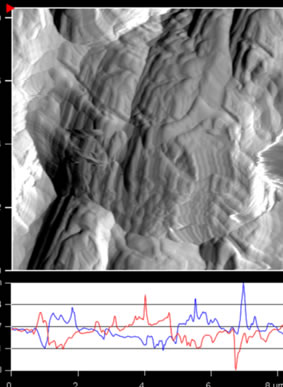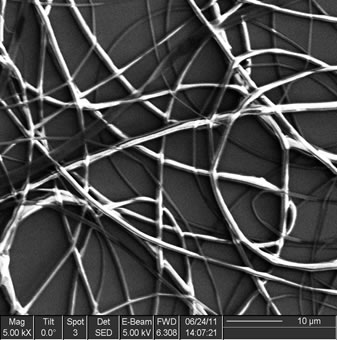Our research interests encompasses materials and devices for electronics applications including energy conversion and storage, in particular super-capacitors, nano-composite materials, and deposition methods such as electro-spinning and electrodeposition
EDLC and Pseudo- Super Capacitors.
Super-capacitors are energy storage devices that function similar to conventional capacitors, but instead of accumulating charges on two conductors, it is stored at the interface of a conductor and an electrolyte solution. In general, super-capacitors are classified in two major groups according to the material in the electrode, these are: physical super-capacitors (carboneous materials) and pseudo capacitors, which store charge indirectly through Faradaic chemical processes. Super-capacitors possess the attribute of having large specific capacitance, combined with large power densities (high charge per unit volume and can be charged and discharged quickly). These attributes make small super-capacitors ideal charge storage devices for distributed and embedded applications such as coupling or powering small robotic systems, distributed sensors / actuators and bio-medical devices including those designed to be implantable. One of the drawbacks of super-capacitor is their low energy density in comparison with batteries. For the past years, our research group had invested efforts to decrease the energy density gap between EDLC and batteries.
Microwave Impedance-AFM
This technique allows us to characterize non-homogeneous matrixes, by meanings of measuring the capacitive and inductive components of the structure. A false color map of a micro or nanoscopic sample areas showing capacitive (insulating) or inductive (conducting) reactance can be constructed allowing the characterization of inhomogeneous materials or devices. It also can provide resistance (dissipation) values , all of this at high frequencies (100 MHz-10 GHz).
Electrospinning
One key aspect in the construction of EDLC is the ion permeable separator that prevents electrical contact, but still allows ions from electrolyte to pass through. We are interested to develop new separator’s membranes of poly propylene by electro spinning, a technique to produce fibers’ mats in the nano-micro size range and to test them in our systems.


